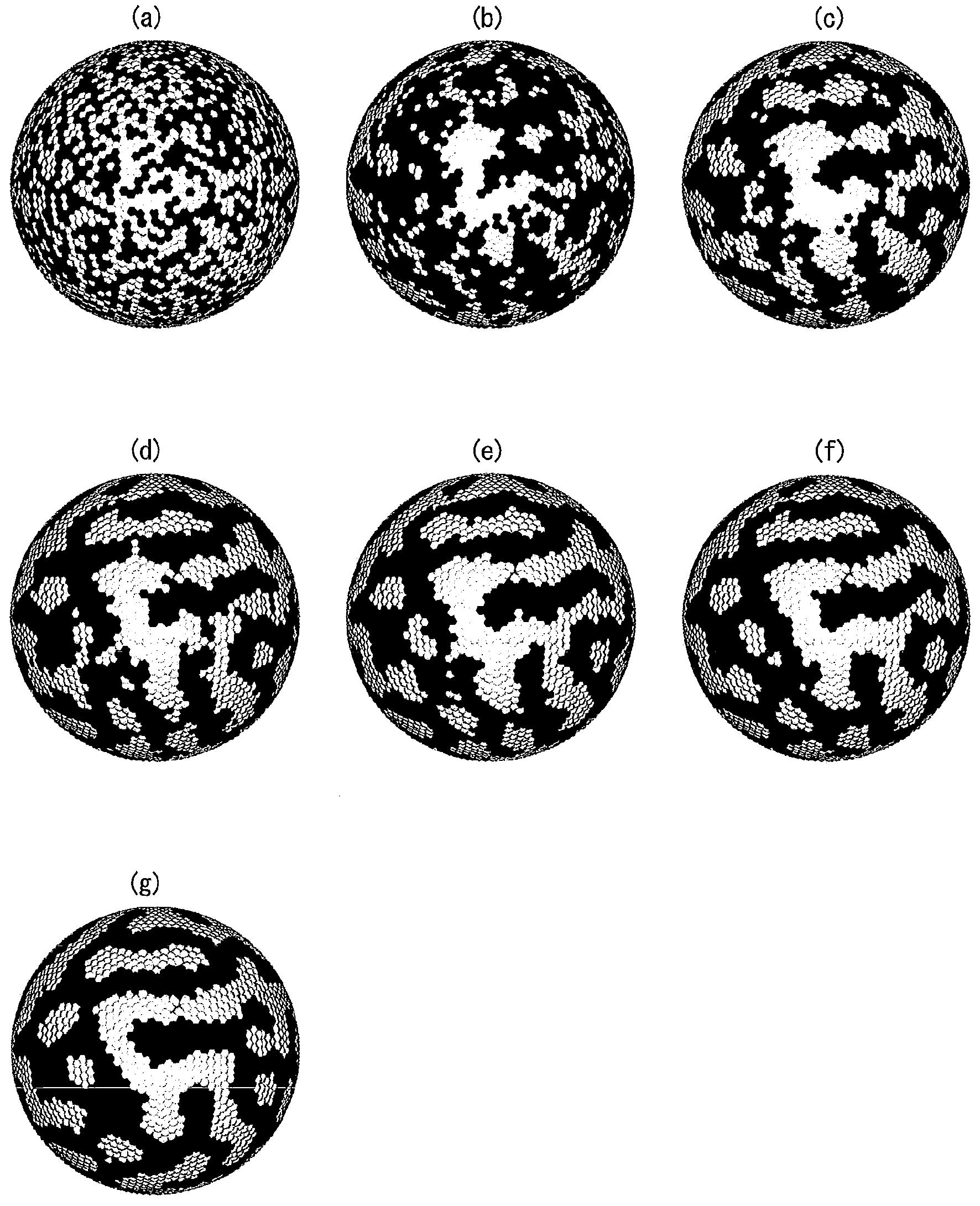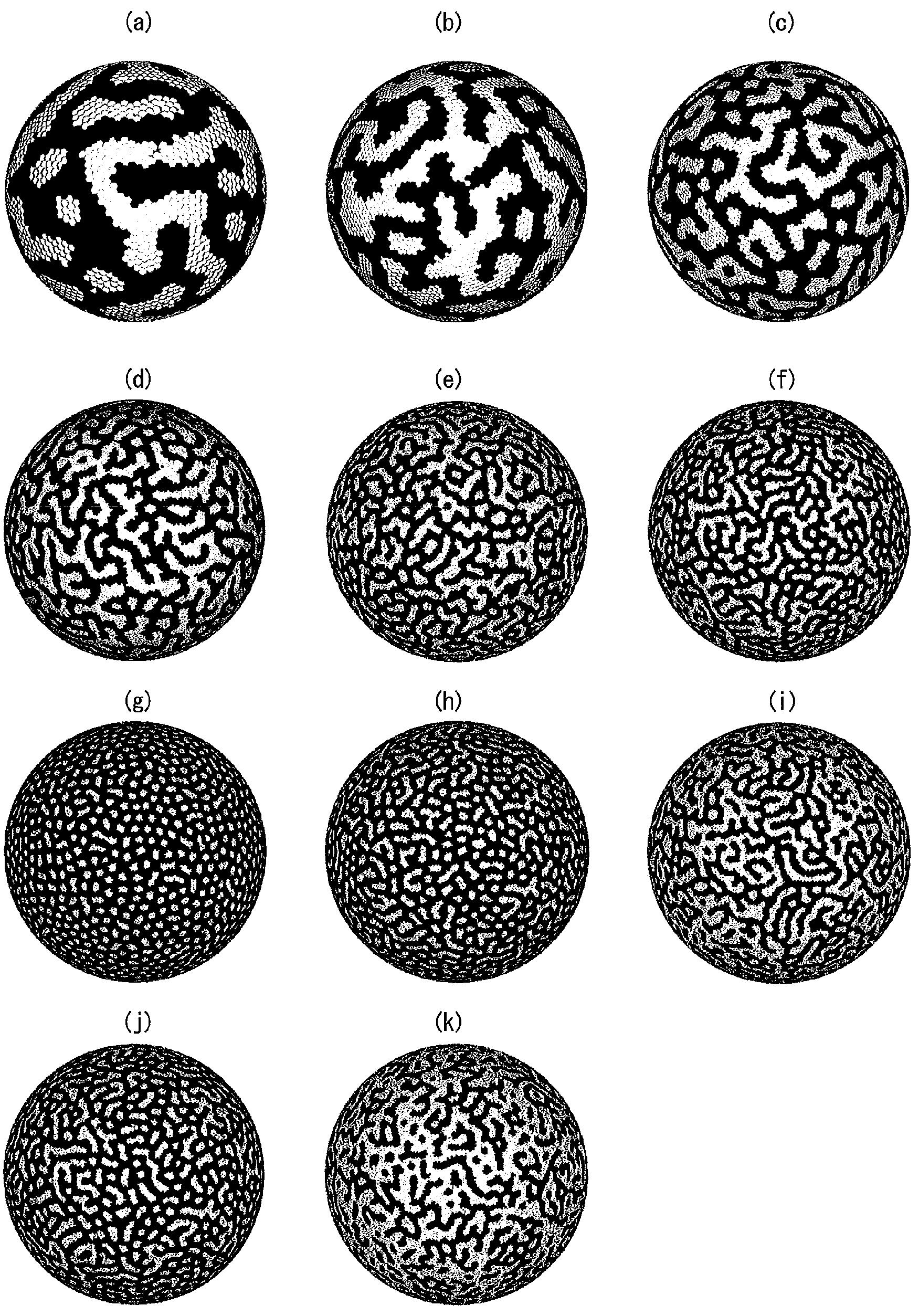Finally, A Golf Ball with Randomly Arranged Craters to Produce Excellent Aerodynamic Symmetry
What? That’s right, craters, not dimples, randomly arranged to produce excellent aerodynamic symmetry. Counterintuitive, right?
Last week a golf ball aerodynamics related patent application became publically available and I could not put it down. The patent application published as US Pub. No. 20090298618 titled “Process for Designing Rugged Pattern on Golf Ball Surface.” I thought, “that’s an odd title,” but it was the first line of the Abstract section that set the hook. It reads “a golf ball has numerous craters on its surface.” Craters, really?
The application starts off with a nice explanation of golf ball aerodynamics and an explanation of the USGA rules regarding the symmetry of a golf ball. I guarantee that you will learn something reading the following (unless you are a golf ball designer):
Check out these crater patterns obtained using the design process disclosed in the patent application.



So, whose golf balls may look like this in the future? Srixon.
David Dawsey – Keeping an Eye on Golf Ball Inventions
PS – click HERE to read more interesting golf ball patent posts
Last week a golf ball aerodynamics related patent application became publically available and I could not put it down. The patent application published as US Pub. No. 20090298618 titled “Process for Designing Rugged Pattern on Golf Ball Surface.” I thought, “that’s an odd title,” but it was the first line of the Abstract section that set the hook. It reads “a golf ball has numerous craters on its surface.” Craters, really?
The application starts off with a nice explanation of golf ball aerodynamics and an explanation of the USGA rules regarding the symmetry of a golf ball. I guarantee that you will learn something reading the following (unless you are a golf ball designer):
[0005] Golf balls have a large number of dimples on the surface thereof. The dimples disturb the air flow around the golf ball during flight to cause turbulent flow separation. By causing the turbulent flow separation, separation points of the air from the golf ball shift backwards leading to a reduction of drag. The turbulent flow separation promotes the displacement between the separation point on the upper side and the separation point on the lower side of the golf ball, which results from the backspin, thereby enhancing the lift force that acts upon the golf ball. The reduction of drag and the enhancement of lift force are referred to as a "dimple effect".
[0006] The United States Golf Association (USGA) has established the rules about symmetry of golf balls. According to the rules, the trajectory during PH (pole horizontal) rotation and the trajectory during POP (pole over pole) rotation are compared with each other. A golf ball having a large difference between these two trajectories, that is, inferior aerodynamic symmetry, does not conform to the rules. A golf ball with inferior aerodynamic symmetry has a short flight distance because the aerodynamic characteristic of the golf ball for PH rotation or for POP rotation is inferior. The rotation axis for PH rotation extends through the poles of the golf ball, and the rotation axis for POP rotation is orthogonal to the rotation axis for PH rotation.
[0007] The dimples can be arranged by using a regular polyhedron that is inscribed in the phantom sphere of a golf ball. In this arrangement method, the surface of the phantom sphere is divided into a plurality of units by division lines obtained by projecting the sides of the polyhedron on the spherical surface. The dimple pattern of one unit is developed all over the phantom sphere. According to this dimple pattern, the aerodynamic characteristic in the case where a line passing through a vertex of the regular polyhedron is a rotation axis is different from that in the case where a line passing through the center of a surface of the regular polyhedron is a rotation axis. Such a golf ball has inferior aerodynamic symmetry.
[0008] JP50-8630 (U.S. Pat. No. 4,729,861) discloses a golf ball having an improved dimple pattern. The surface of the golf ball is divided by an icosahedron that is inscribed in the phantom sphere thereof. Based on this division, dimples are arranged on the surface of the golf ball. According to this dimple pattern, the number of great circles that do not intersect any dimples is 1. This great circle agrees with the equator of the golf ball. The region near the equator is a unique region.
[0009] Generally, a golf ball is formed by a mold having upper and lower mold halves. The mold has a parting line. A golf ball obtained by this mold has a seam at a position along the parting line. Through this forming, spew occurs along the seam. The spew is removed by means of cutting. By cutting the spew, the dimples near the seam are deformed. In addition, the dimples near the seam tend to be orderly arranged. The seam is located along the equator of the golf ball. The region near the equator is a unique region.
[0010] A mold having a corrugated parting line has been used. A golf ball obtained by this mold has dimples on the equator thereof. The dimples on the equator contribute to eliminating the uniqueness of the region near the equator. However, the uniqueness is not sufficiently eliminated. This golf ball has insufficient aerodynamic symmetry.
[0011] JP61-284264 (U.S. Pat. No. 4,744,564) discloses a golf ball in which the dimples near the seam are greater in volume than the dimples near the poles. This volume difference contributes to eliminating the uniqueness of the region near the equator.
[0012] A golf ball disclosed in JP61-284264 eliminates, by the volume difference of dimples, the disadvantage caused by the dimple pattern. The disadvantage is eliminated not by modification of the dimple pattern. In the golf ball, the potential of the dimple pattern is sacrificed. The flight distance of the golf ball is insufficient.
[0013] Research has been conducted to determine the causes of the uniqueness of the region near the equator and the consequent insufficient symmetry. However, the causes have not been clarified yet, and a general theory for the improvements has not been established.
.
.
.
[0022] On the surface of a golf ball according to the present invention, a large number of craters are formed by recesses. These craters prompt turbulent flow separation. These craters contribute to the flight performance of the golf ball. Because these craters are arranged in a random manner, the pattern does not have directional properties. The golf ball has excellent aerodynamic symmetry.
.
.
.
[0088] For designing the rugged pattern, a Cellular Automaton method is used. The Cellular Automaton method is widely used in the fields of computability theory, mathematics, theoretical biology and the like. A model of the Cellular Automaton method consists of a large number of cells and simple rules. By this model, natural phenomena such as life phenomena, crystal growth, turbulent flow and the like can be simulated. In this model, each cell has a state. This state can change to another state as a stage proceeds. The state of a cell at stage (t+1) is decided by the state of this cell and the states of a plurality of cells adjacent to this cell at stage (t). This decision is performed according to a rule. This rule is equally applied to all the cells.
[0089] For designing the rugged pattern, a reaction-diffusion model of the Cellular Automaton method is suitable. This model is used for simulating patterns on body surfaces of beasts, birds, fish, insects and the like. In this model, a plurality of states are assumed. The number of states is normally 2 or more and 8 or less. For each cell, an initial state is decided. As a stage proceeds, the state is updated according to a rule. There are cells whose states change by this update, while there are also cells whose states do not change by this update. The Cellular Automaton method is disclosed at Pages 25 to 28 of "Cellular Automaton method, Self-organization of Complex Systems and Massively Parallel Processing" (written by Yasuyoshi Kato et al, published by Morikita Publishing Co., Ltd.).
[0090] A designing process according to the present invention is characterized in that the state of a cell is updated under the influence of other cells adjacent to this cell. By this update, a rugged pattern in which a large number of craters 8 are arranged in a random manner is obtained. As long as this characteristic is maintained, any model can be used. The designing process according to the present invention is preferably executed using a computer and software in light of efficiency. Of course, the present invention is practicable even by hand calculation. The essence of the present invention is not in a computer and software. The following will describe in detail a designing process using a reaction-diffusion model of the Cellular Automaton method.
Check out these crater patterns obtained using the design process disclosed in the patent application.



So, whose golf balls may look like this in the future? Srixon.
David Dawsey – Keeping an Eye on Golf Ball Inventions
PS – click HERE to read more interesting golf ball patent posts

Comments